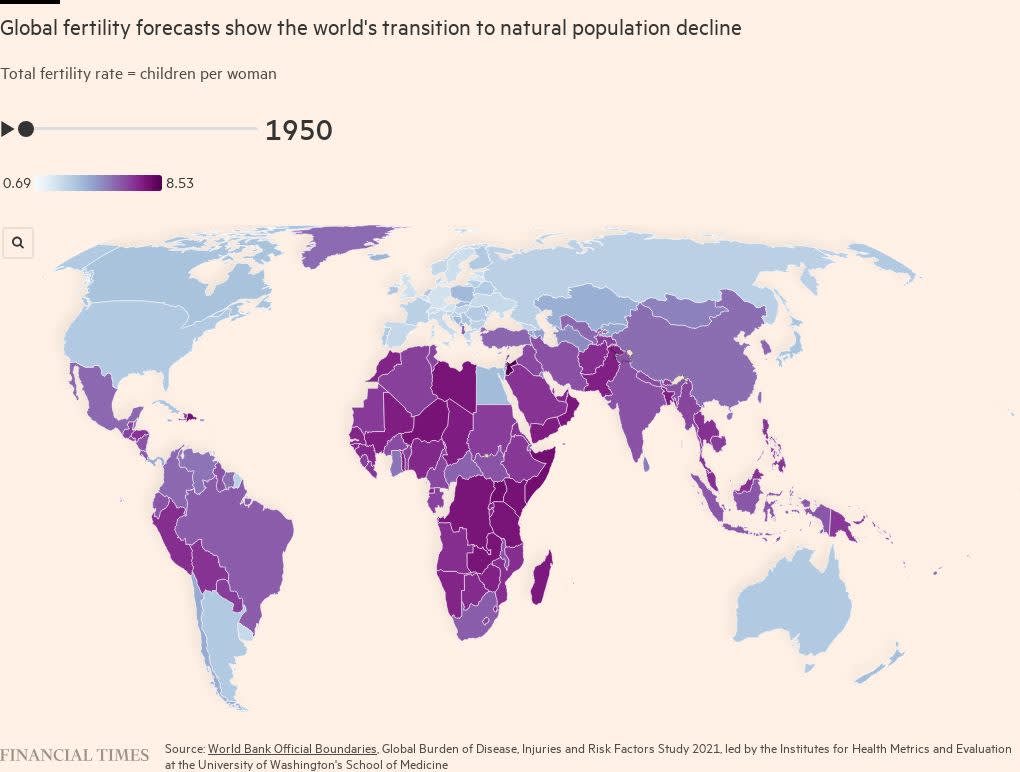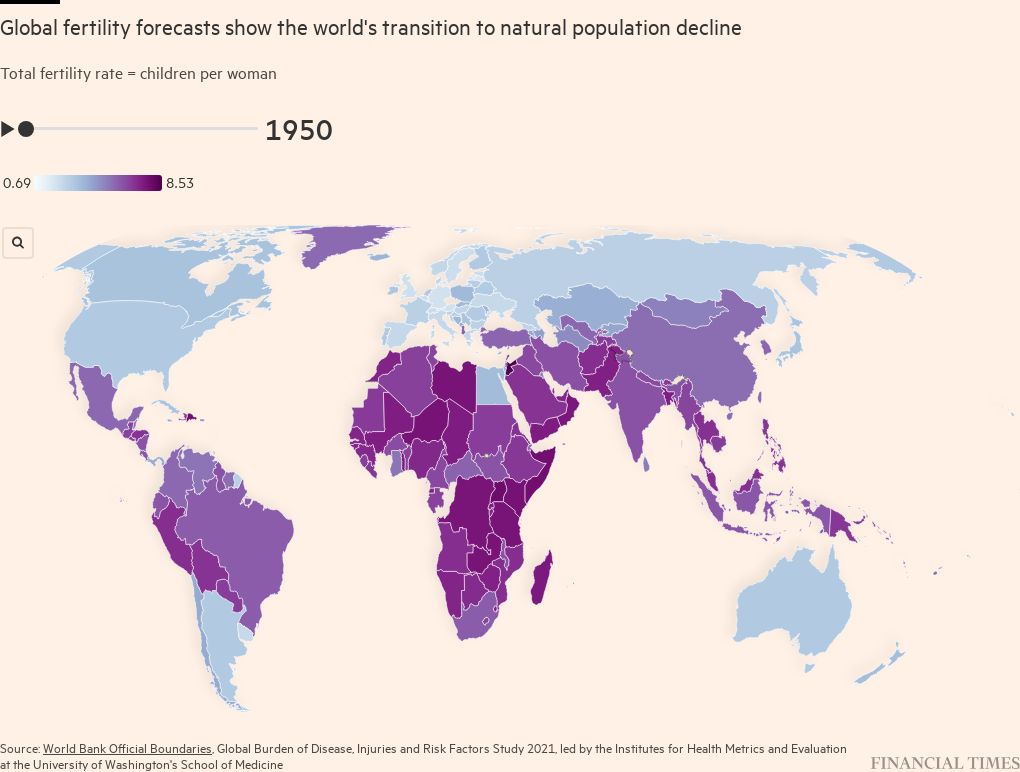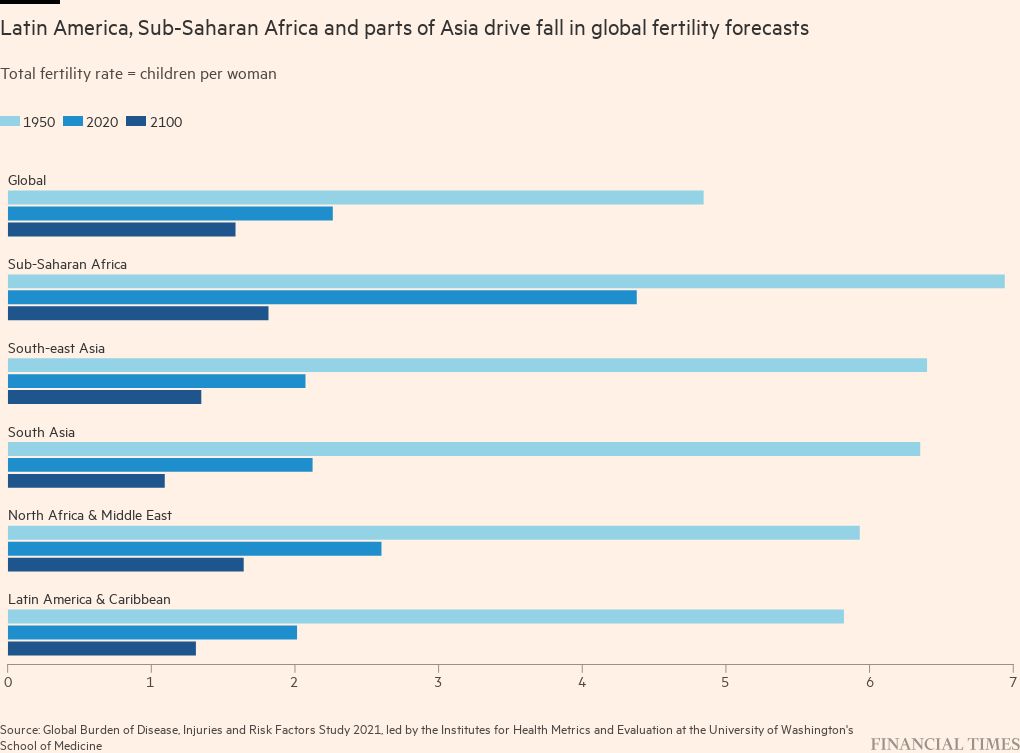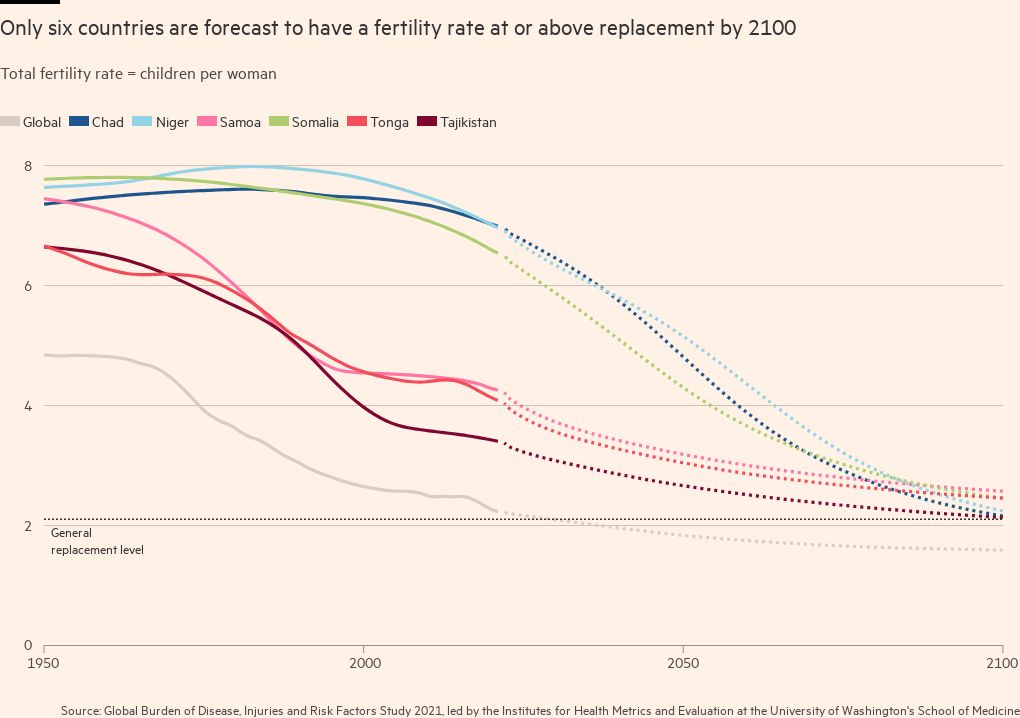Unlock the Editor’s Digest for free
Roula Khalaf, Editor of the FT, selects her favourite stories in this weekly newsletter.
Falling fertility rates in most countries over the next quarter century will drive a global demographic shift that will have a far-reaching social and economic impact, according to a new study.
Three-quarters of nations are projected to fall below population replacement birth rates by 2050, leaving growth concentrated in a minority of low-income states in sub-Saharan Africa and Asia that face acute threats from resource shortages and climate change.
The research published in The Lancet medical journal on Wednesday highlights the ever-sharper divide between the countries still powering population growth and those where birth numbers are dwindling.
“We are facing staggering social change through the 21st century,” said Stein Emil Vollset, the paper’s senior author and a professor at the Institute for Health Metrics and Evaluation. “The world will be simultaneously tackling a ‘baby boom’ in some countries and a ‘baby bust’ in others.”
The study of 204 countries and territories forecasts 76 per cent will dip below population replacement rates by 2050 — a number that will rise to 97 per cent by 2100. The proportion of live births in low-income countries is projected to all but double from 18 per cent in 2021 to 35 per cent by the end of the century. Sub-Saharan African countries are forecast to account for half of global births by 2100.
“The implications are immense,” said Natalia Bhattacharjee, co-lead author of the study and lead research scientist at IHME. “These future trends in fertility rates and live births will completely reconfigure the global economy and the international balance of power — and will necessitate reorganising societies.”
The UN forecasts the global population could grow from the current figure of about 8bn to 9.7bn in 2050 and peak at nearly 10.4bn in the mid-2080s. But those figures mask how the so-called total fertility rate (TFR) — the average number of children born per female per lifetime — has already fallen in some countries below the level of roughly 2.1 needed for population replacement.
Western Europe’s TFR is forecast to be 1.44 in 2050, while South Korea’s 0.82 will be the world’s lowest. By 2100, just six countries are expected to have TFRs higher than 2.1: Tajikistan in central Asia, the Pacific islands of Tonga and Samoa, and the African nations of Somalia, Chad and Niger.
Generally, as countries become richer, women tend to have fewer babies — a trend reinforced by state policies such as the one-child rule China imposed between 1980 and 2016.
Some countries, such as Japan and Hungary, have in recent years tried to boost birth rates through incentives such as tax breaks and cheaper childcare, although no measures appear to have had the hoped-for degree of impact.
Governments need to accept and plan for the reality that women should be able to have the number of children they want and be supported accordingly, said Sarah Harper, a professor of gerontology at Oxford university.
That required “joined-up thinking” in areas such as migration policy, and consideration of how smaller populations could have the beneficial effect of easing pressure on land, housing, biodiversity and the climate, she added.
“We live on a finite planet, and falling populations — while novel historically — have many advantages for the 21st century, albeit requiring new economic models,” Harper said.
Data visualisation by Janina Conboye
Read More: World News | Entertainment News | Celeb News
FT











